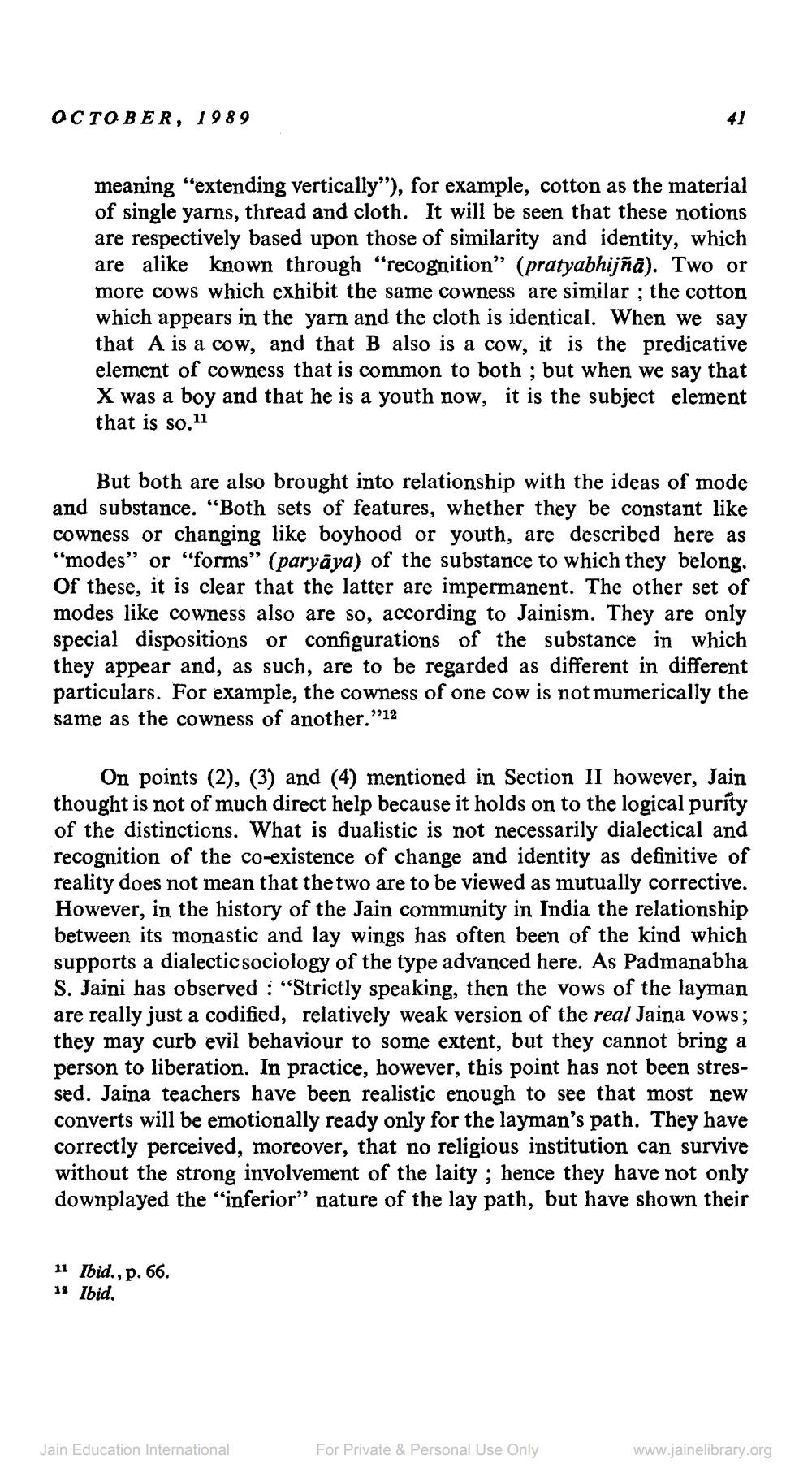Book Title: Jain Journal 1989 10 Author(s): Jain Bhawan Publication Publisher: Jain Bhawan Publication View full book textPage 7
________________ OCTOBER, 1989 meaning "extending vertically"), for example, cotton as the material of single yarns, thread and cloth. It will be seen that these notions are respectively based upon those of similarity and identity, which are alike known through "recognition” (pratyabhijñā). Two or more cows which exhibit the same cowness are similar : the cotton which appears in the yarn and the cloth is identical. When we say that A is a cow, and that B also is a cow, it is the predicative element of cowness that is common to both ; but when we say that X was a boy and that he is a youth now, it is the subject element that is so.11 But both are also brought into relationship with the ideas of mode and substance. “Both sets of features, whether they be constant like cowness or changing like boyhood or youth, are described here as “'modes” or “forms” (paryāya) of the substance to which they belong. Of these, it is clear that the latter are impermanent. The other set of modes like cowness also are so, according to Jainism. They are only special dispositions or configurations of the substance in which they appear and, as such, are to be regarded as different in different particulars. For example, the cowness of one cow is not mumerically the same as the cowness of another."12 On points (2), (3) and (4) mentioned in Section II however, Jain thought is not of much direct help because it holds on to the logical purity of the distinctions. What is dualistic is not necessarily dialectical and recognition of the co-existence of change and identity as definitive of reality does not mean that the two are to be viewed as mutually corrective. However, in the history of the Jain community in India the relationship between its monastic and lay wings has often been of the kind which supports a dialectic sociology of the type advanced here. As Padmanabha S. Jaini has observed : “Strictly speaking, then the vows of the layman are really just a codified, relatively weak version of the real Jaina vows; they may curb evil behaviour to some extent, but they cannot bring a person to liberation. In practice, however, this point has not been stressed. Jaina teachers have been realistic enough to see that most new converts will be emotionally ready only for the layman's path. They have correctly perceived, moreover, that no religious institution can survive without the strong involvement of the laity; hence they have not only downplayed the "inferior” nature of the lay path, but have shown their 11 Ibid., p. 66. 11 Ibid. Jain Education International For Private & Personal Use Only www.jainelibrary.orgPage Navigation
1 ... 5 6 7 8 9 10 11 12 13 14 15 16 17 18 19 20 21 22 23 24 25 26 27 28 29 30 31 32 33 34 35 36 37 38
